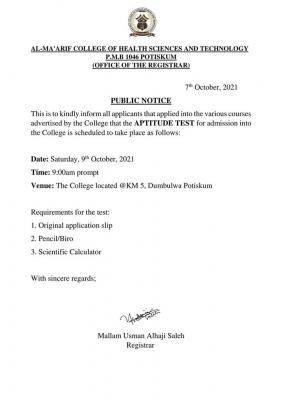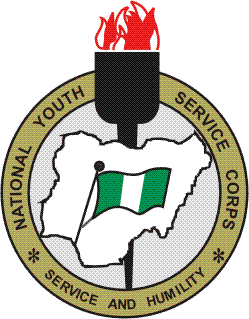
Letter writing is an act of communicating information, feelings, ideas and opinions to somebody who is absent or resides in a distance. A letter should contain full details of the issue one is writing about in order to bring about the same reactions that would have occurred if the message contained in it had been a spoken one.
There are three types of letter writing with different features methods and style. The types of letter writing are:
- Informal letter
- Semi formal letter
- Formal letter

Powerful Guidelines On How To Write A Letter
In this blog post we are going to be discussing on how to write a letter and these would include how to write an informal letter, semi-formal letter, and of course, how to write a formal letter. We shall be treating them one after the other after defining an informal letter, semi-formal letter and a formal letter, so that at the end of this post you should be able to identify and know the difference between a semi-formal letter and an informal letter and most importantly, how to write a letter of any kind whenever you are in a position to do so.
In addition, we will be giving you real life examples and models of how to write a letter, be it informal letter, semi-formal letter or formal letter as this would give you better understanding on the subject matter.
Informal Letter (Definition)
An informal letter is also known as a personal letter. The categories of informal letter are: a) letters to close relative both in your age group or older ones, b) letters to contemporary who is not related to you but the close friend. c) Letters to a pen friend in another country.
An informal letter is expected to be internet by showing the close relationship between its writer and the person the letter is being written to. It is conversational and simple in style. The writer is free to write as if he or she is talking or conversing the person he’s writing to.
The style of an informal letter is strictly informal in nature.
How to Write an Informal Letter
I) Content
The content of an informal letter depends on what you are asked to write on, but your point must be relevant and must answer all the aspect of the question to any good mark.
II) Organization
a) An informal letter must have the following features:
a) Address of the Writer and Date:
This mostly well punctuated. The address must appear on the top right hand of the page. In writing the address, you need to write your house number, the street name, the town from which you are writing and the State.
Example: 38, Omani Crescent,
Satellite Town,
Lagos.
6/10/22
If you are using your school address, write the name of your school and the town on the state the school is located.
Example: Kings High School,
Satellite Town,
Lagos.
6/10/22
Finally, if you are using a post office box address you should write it close to town and the State.
Example: P.O. Box 11254
Festac Town,
Lagos.
6/10/22.
You should take note of the following: Firstly, your house address, you should have a comma after the house number and you don’t need to write ‘No’ for number before writing the address.
Secondly, you should punctuate your address and date very well. After every line of the address, put a comma at the end of the address, put a full stop. However, it is equally acceptable to write your address without marking them off with comma but with full stop after the town or city. After the date put a full stop. In writing the date, you may use only the number of the day in the month on the number of the months in the year, e.g. 6/10/2022. You are also free to write it in full, e.g. 10th October, 2022.
Thirdly, you may abbreviate words like streets, Road, Avenue and Crescent when writing your address but when you do so, add a full stop after the abbreviation on the necessary comma sign.
Example: 40, Bishop Cole Str.,
Maryland,
Ikeja,
Lagos.
6/10/22.
2) Greeting/Salutation:
This is usually, “Dear” plus the first name of the person you are writing to, e.g. Dear Rosaline or Deal Femi. This is so because informal letters must reflect the cordial relationship between the writer and the person to whom he or she is writing. If you want to show more intimacy, you can write: Dearest Rosaline or My Dear Rosaline etc.
Note that in this case, the letter ’d’ in ‘My dear Rosaline’ must be a small letter. You can also write simply Dear friend, Dear Uncle, but which the name of the uncle, the ‘u’ of ‘uncle’ should be a small letter, e.g. Dear uncle Jidenna.
3) Complementary Close:
‘Yours sincerely’, is the most appropriate according to the marking scheme, but you can also write: Yours affectionately.
Not here that Yours’ should be written with an apostrophe before s, e.g. Your’s as more students ignorantly write, Yours’ should begin with a small letter. Thus, it is wrong to write ‘Yours Sincerely’, or ‘Yours Affectionately’.
4) First Name of Writer:
You are expected to write your first name only after writing the complimentary close. This is to show the intimacy between you and the person you are writing to. Remember that you started with ‘Dear’ and the name of the person you’re writing to, so you will complete the cordiality by ending the letter with your own first name.
E.g. Yours sincerely,
Kelvin (The writer’s name).
a) The absence or wrong use of any of the above features of informal letter is usually penalized. Options of these features will make your examiner score you lowly under organization.
b) Your points of ideas should be logically arranged and presented.
c) Your paragraphs must be effectively linked by using linking words and phrases.
iii) Expression
As already mentioned informal letters are expected to reflect the close or cordial relationship between the writer and recipient of the letter. Therefore, the language of informal letters should be informal and chatty ordinarily but you should be cautious to make sure that your language reflects the emotional on the circumstance surrounding the topic you are given.
You can make use of contractions like don’t, I’ll, I’ve, I’d etc. but slangs are not accepted in your informal letter.
SEMI-FORMAL LETTER (Definition)
Semi-formal letters are formal letters with some qualities of the personal or private letter. The categories of letter under this are:
- Letters written to one’s adult friend and elderly people.
- Letters written to friends of one’s parents or elderly relations.
- Letters written to one’s former teacher, housemaster, or sport master.
How To Write A Semi-Formal Letter
I) Content
The content depends on the topic you’re writing on but use appropriate sequencing to present your points. Semi-formal letters are always written to a person who knows you either fairly or not so well. So, depending on the situation, you should not leave the person to whom you’re writing in doubt of your identity by giving all relevant information on your topic. If the letter involves a request, make your request politely.
ii) Organization
a) The writer’s address should be at the right-hand corner of the page. Never use two addresses in a semi-formal letter.
b) In writing the greeting or salutation, use ‘Dear’ which the title and surname of the person you are writing to,
Example: Dear Chief Adenuga
Dear Alhaji Dangote
c) Your paragraphs and sentences must be well linked and expected to write a mixture of short and long sentences.
d) In writing the complimentary close, use ‘Yours sincerely’ only. Avoid the use of ‘Yours faithfully’ or any other form.
e) Write your full names or initials and surname and remember to put your signature above the name to end semi-formal letter. You can indicate your official status below your name.
iii) Expression
a) Expected to be simple in your language but your language should not be colloquial or chatty as when you are writing an informal letter. At the same time, your language should not be stiff formal or pompous.
b) You are expected to express yourself clearly.
FORMAL LETTER (Definition)
Informal letter is an official letter greeting to someone who is no official position to get something done or achieve a particular result.
Formal letters are directed to the following categories:
1) Authorities like ministries corporations and government agencies
2) Business houses and offices like companies and newspaper publishing houses
Therefore, the categories of formal letters include:
1) Letters of application and their replies
2) Official request and their replies.
3) Protest letters and their replies
4) Formal invitations letters
5) Letters on business transactions
6) Letters to newspaper and publishing houses e.g. letters to the editor of a newspaper House.
7) Letters to the principal of a school.
How to Write a Formal Letter
I) Content
a) The content depends on the topic you are given but a formal letter should be impersonal and discuss nothing but facts about what you are writing on. The tone of familiarity or intimacy is totally out of place. For example, in a formal letter you are not expected to start your letter by asking about the condition of health, personal feelings, or any personal thing like the health and well-being of the members of the family of the person you are writing to.
b) Go straight to the purpose of writing and avoid irrelevant details.
ii) Organization
It is mandatory for a formal letter to have the following features:
1) Address of the Writer and Date (Well Punctuated)
E.g. Methodist Boys’ High School,
P.M.B. 2009,
Lagos.
31st March, 2020.
Always remember that you are not expected to abbreviate any word in the address. For example, when you can write, Sch., for school when writing an informal letter, it is unacceptable when writing a formal letter.
2) Designation of Full Address of the Receiver
E.g. The Managing Director,
Cadbury Nigeria Plc,
Agidingbi,
Ikeja,
Lagos,
31st March, 2022.
3) Greeting/Salutation:
This is strictly Dear sir or Dear Madam/Dear ma. you can write ‘Dear Principal’ if your directing your letter to the Principal of your school or any school or also you can write, Dear Editor if you’re writing a letter to the editor of a newspaper.
4) Title of The Letter:
A formal letter must have a title which you have to couch depending on the topic you are writing on. For example, if you’re writing a letter on lack of social amenities in your area, an appropriate title will be: ‘LACK OF SOCIAL AMENITIES IN MY LOCALITY’. You can name your locality in the title depending on where you are writing from.
5) Complementary Close:
The acceptable complimentary close for formal letters is, Yours faithfully. You should always remember that ‘Yours’ must begin with a capital letter and without any apostrophe sign while ‘faithfully’ must begin with a small letter.
6) Signature of the Writer:
Your signature is compulsory whenever you write a formal letter.
7) Name of the Writer:
Your signature must be followed by your full name that is, your first name and your surname all your surname and initials.
Example: Yours faithfully
(Your signature)
Kelvin Adetutu
Or
Yours faithfully
(your signature)
Kelvin G.A.
a) The absence of any of the above-mentioned features will be penalized by your examiner. The candidate who write a formal letter without the formal features you will lose marks.
b) Where the question demands that you refer to the previous correspondence or a brief comment on something, you can open your letter with this and quickly follow it up with your views.
c) The body of formal letters should contain only detailed facts about what you are writing on, you’re not expected to concern yourself with the personal feelings of the person you are writing to. This is because you are writing to his office and not to him personally.
d) Your paragraphs must be linked and you are expected to present your point and ideas logically and sequentially.
iii) Expression
a) Formal letters demand a formal register. Your language is expected to be precise and clear. You’re expected to use concise and direct language to convey your message.
b) You are expected to write a mixture of long and short sentences and you will earn a good mark if you use your vocabularies aptly.
c) You should not be personal, and even if you are emotional in discussing the topic of writing you are expected to express yourself in polite language. In making a request you should be polite.
d) You must not use contractions like don’t, hasn’t, doesn’t and any other form of abbreviations.
e) You should avoid using slang and colloquial expressions.
In conclusion, we an deduce that writing a letter involves guidelines that must be followed, when you miss out or deviate or interchange the features of a semi-formal letter for an informal letter or formal letter for a semi-formal letter, that would be a huge error and a complete act of negligence from the part of the writer.
Following the model we put up here would help you write an exceptional letter that would be worthy of the time spent in reading it. W e took our time to cite examples at every stage as this would help you better understand the step by step process or approach that should be taken when learning how to write a letter. We advise that you read this blog post carefully, over and over again to get yourself better acquainted with on how to write a good letter.
Do you have any question or opinion? you are free to send them to us via the comment section below and we shall respond in due time.
Please remember to share this post through the social media buttons below as it would be of great help for those who have been in search of this information.



